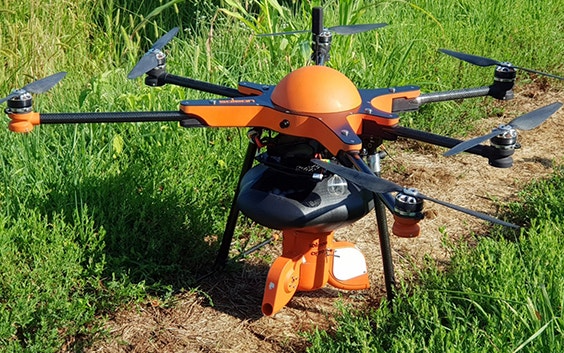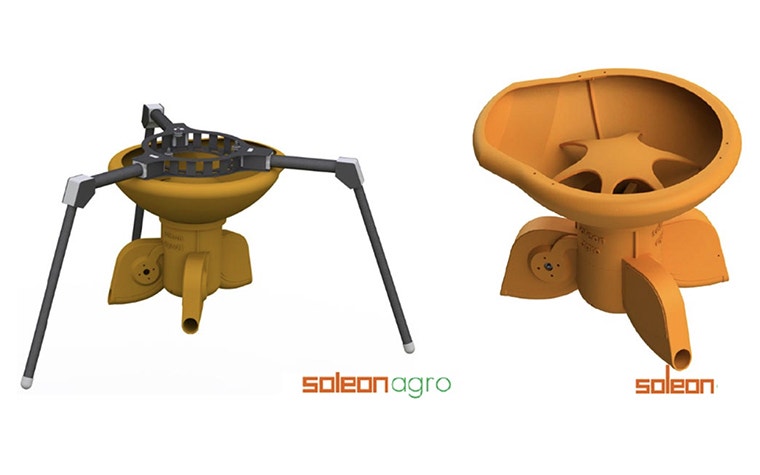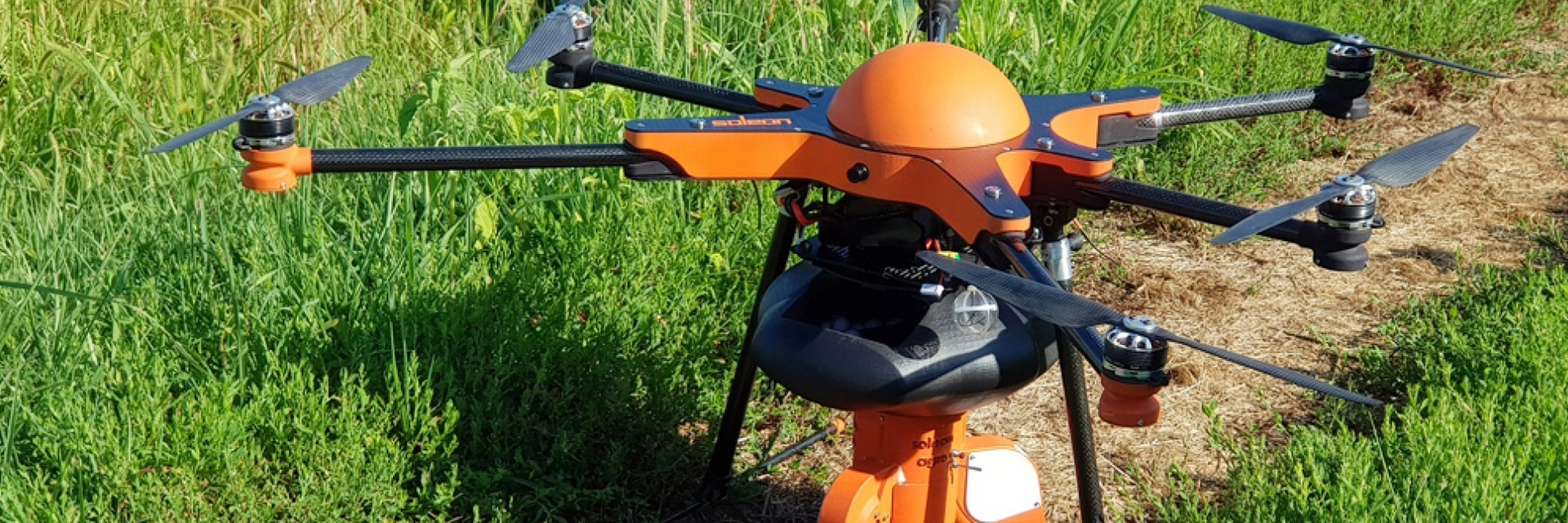사례 연구
Reimagining Agricultural Pest Control with Soleon’s 3D-Printed Drones

Italian drone company Soleon has been innovating in the field of unmanned aerial applications since 2009. From aerial photography to thermal mapping, the company is involved in diverse projects, which requires a flexible approach to their drone design. Materialise has been providing Soleon with 3D printing services for years, and one of those projects is the SoleonAgro, a drone intended for biological pest control in agriculture.
The challenge
Minimize the weight of end-use parts for a highly specialized drone
The Corn Borer is an invasive pest that targets corn stalks, causing a significant amount of crops to be destroyed each year. Instead of using pesticides or genetically modified crops as a solution, farmers can use Trichogramma — a species of wasp that eats the Corn Borer — as a natural, eco-friendly solution.
To be able to distribute the Trichogramma eggs efficiently and effectively without damaging the crops, Soleon designed a specialized drone, complete with a unique three-directional pesticide distribution system and carefully designed arms that would allow the device to work three times faster than their competitors.


“The design of the drone body was very complex, since we customized it completely for the purpose of an efficient distribution system,” says Michael Überbacher, Soleon’s founder. “We had already worked with Materialise for years for rapid prototyping on various projects, and had arrived at a design that we were happy with for the SoleonAgro.”
When Soleon came to Materialise for support on the prototyping and production of the end-use parts for the SoleonAgro, their key requirement was that the parts needed to be lightweight in order to maximize the drone’s battery power.
The solution
Serial production with 3D printing
Once the design files were ready, Materialise engineers supported Soleon to optimize the files for 3D printing, including using lattice structures for weight optimization, surface texturing, and data preparation.
Due to the complexity of the parts and the functional nature of the application, laser sintering was the ideal choice to print the drone body and parts. PA 12 (polyamide), a lightweight and versatile material, was chosen for its durability and low weight, while PA-GF (polyamide filled with glass particles) was used in parts located close to the motor, as this material has higher rigidity and is therefore less vulnerable to vibration.
The result
Complex design brought to life quickly and effectively
The drone market is fast-paced, requiring frequent design upgrades and short product development cycles. For Soleon, 3D printing offers the flexibility they need to adapt drones to the needs of their customers and get to them to market fast.
“The big advantage of 3D printing is that we can very quickly create complex systems, even in small quantities. Normally the parts are printed and sent within one week. As a small company, this offers us the opportunity to react very quickly to the changes and wishes of our customers,” says Michael Überbacher at Soleon.
“Working with Materialise has been great, due to their wide range of technologies and large machine capacity, as well as their in-house design and engineering support. With this, we’ve managed to make the SoleonAgro the most cost-efficient and best performant solution on the market.”
All images courtesy of Soleon
공유 위치:
이 사례 연구를 간단히 요약
Machinery & equipment
Selective laser sintering
PA 12
PA-GF
Design optimization
Weight reduction
Finishing quality
Faster lead times
